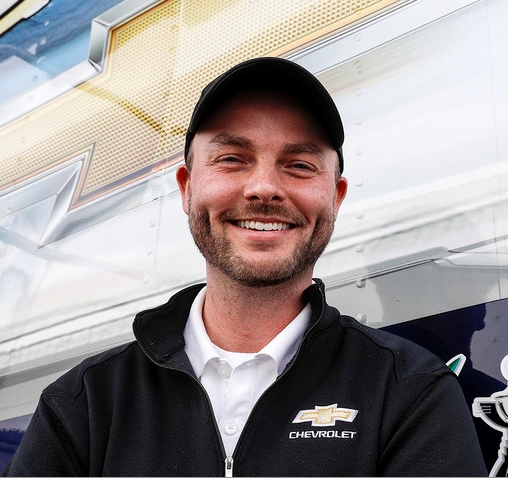Rob Buckner Q&A on 2020 Chevy IndyCar engine challenges
 |
| Rob Buckner, Chevrolet Engineering Program Manager for the INDYCAR program |
Robert "Rob" Buckner, Chevrolet Engineering Program Manager for the INDYCAR program answers questions on managing five races in 15 days with two doubleheaders – one on the biggest track on the schedule followed immediately with one on the smallest track on the schedule and other topics.
QUESTION: INDYCAR is currently in a stretch of five races in 15 days on three very different tracks. From the engine manufacturer side, what are the processes the Chevy engineers with the technical partners have to address to get the information to the teams? What kind of information do you disseminate to the Chevy teams prior to a race weekend?
ROB BUCKNER: Everyone on the Chevrolet side has been putting in a great effort during these busy times, we all really missed being at the track and racing so we are enjoying the busy month of July. Our Chevrolet teams and drivers have been preparing for each event at the Chevrolet Performance simulator which helps us prepare for each unique circuit. That process really enables us to have the dialog of current weaknesses and issues that we need to collectively address together. On the engine side we are always looking for gains in performance and fuel economy that can be applied to every discipline that IndyCar represents.
QUESTION: INDYCAR has had at least one doubleheader on the schedule for several years. Having raced at Iowa Speedway for many years, does that familiarity make the preparation for a doubleheader weekend less complicated?
ROB BUCKNER: The Iowa doubleheader will be a unique challenge, because it is the first double header at an oval in this era and the race distance for each race is still significant at 250 laps. Iowa is more about the cornering forces than the mileage accumulation so it will be a grind for the crews to have a properly prepared car for both days. That goes for the drivers also – the July Iowa race is always hot and humid, very little straight away to rest. Everyone will be exhausted after Saturday night’s race. I have always loved night racing so it is a weekend I am looking forward to.
QUESTION: Not violating proprietary information in any way, in a doubleheader event, can enough be learned in Race One and then implemented to make a significant difference in performance in Race Two?
ROB BUCKNER: On the chassis side I am sure there will be some improvements made, there are so many smart people in the paddock that running a full race and having 20 hours to think about what you would do differently will lead to some improvements for Saturday. Iowa is also a tire management type event over a stint length so balancing that will be a real challenge. As an engine supplier we will be looking to address any immediate reliability concerns or driver feedback as we play a role in managing tire wear. Hopefully if we execute on Friday night we can replicate that on Saturday and get some good results. Our engine group is certainly up to the challenge.
QUESTION: Without giving away any secrets, how significant are the mapping changes from a small, tight road course, to a big technical a road course and then to a short oval?
ROB BUCKNER: It is easier now than it would have been in years past since all these July events are ran at 1.5 bar boost level. With the amended schedule for 2020 we are still on our first race engines that have been installed since the COTA preseason test in February. These engines are closing in on 2000 miles but have been very reliable so far. The needs of a road course and an oval are very different but our engineering support on the weekend have developed great baselines, so we are in a really good place right from lap 1 in first practice. We are very fortunate to have such an experienced Chevrolet support network during these times of so much change
QUESTION: How is Chevrolet able to adapt engine characteristics and drivability to accommodate the varying driving styles across the group of drivers in the Chevrolet V6 camp?
ROB BUCKNER: It is very useful to have a library of calibration and track data to reference over the years and each of our Chevrolet engineers have a great relationship with their driver. Our group can then take the drivers verbal feedback and identify what they are referencing from the engine data and make improvements. We really get to understand what each of them are looking for from the engine and tailor around that. It is incredible how observant the drivers are and how attentive to minor changes they can be in this development process. It is definitely a process that requires attention to detail and our group really excels at that.
